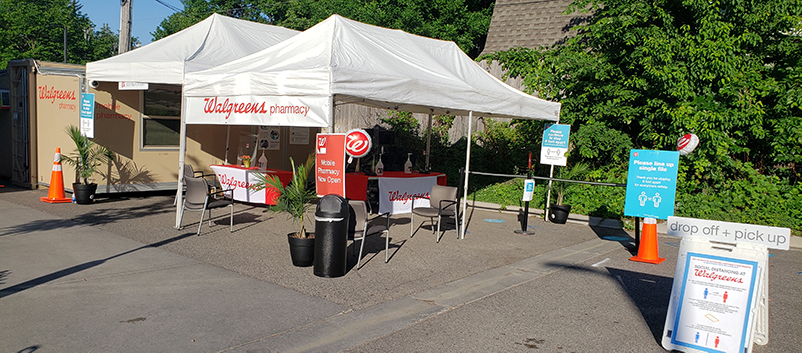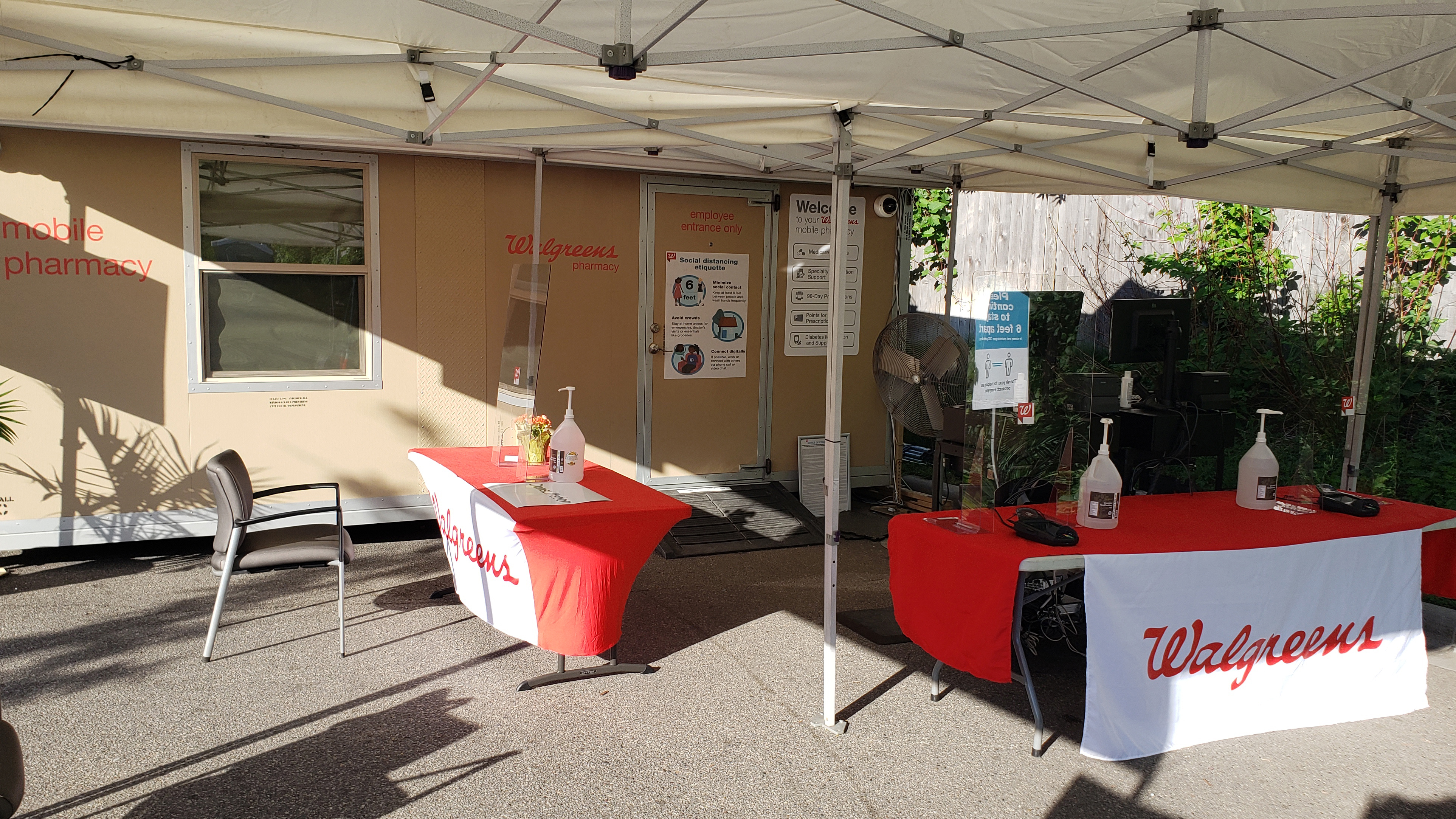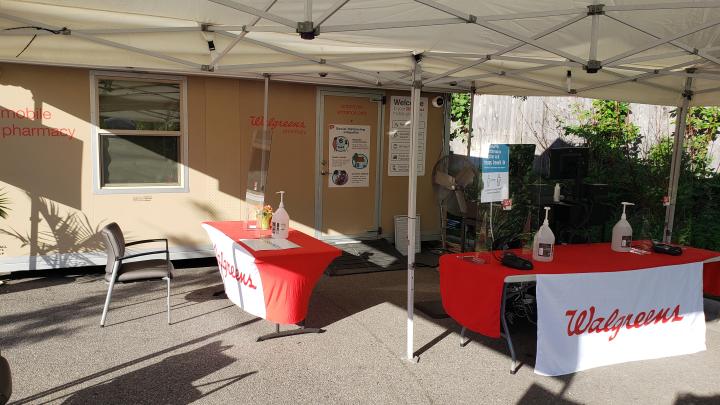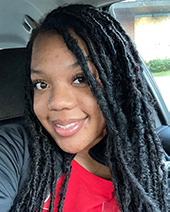
A summer rain has just stopped at the Walgreens at Hennepin Avenue and 27th Street in South Minneapolis, where pharmacy technician Centaya Gonzalez is in the parking lot outside the boarded-up building, on her phone under a tent.
Six weeks ago, it got pretty bad for her – “overwhelming” is the word – after the killing of George Floyd and the outrage that followed: three nights that escalated into destruction and looting, spreading north from the Lake Street epicenter to reach the store where she works, in the neighborhood where she lives, in the city where she grew up.
“When everything first blew up, there was a lot of tension for me,” Gonzalez confesses, her voice suddenly unsteady. “I’m African-American. I’ve had someone in my family who was killed by a police officer. And then, to see that the area where I live was nearly burning down … it was a lot to take in, you know? It was a lot to process.”
She and a few dozen other employees from the Hennepin store – normally a bustling 24-hour site – were reassigned to other Walgreens locations. For Gonzalez, it was St. Louis Park, a 15-minute drive west, without most of her usual co-workers at her side. That was overwhelming, too. She felt paralyzed at first – unmotivated. She needed some time off, to think about it all.
Now she’s back. Re-centered, refocused, a little different than she was before.
The pharmacy, too, is back. Re-centered, refocused and – guess what? – a little different than it was before.
Different how? Well, it’s outside now – a 20-by-20-foot mobile trailer tucked behind the store, at the spot where cars would normally enter the pharmacy drive-thru. A pair of reinforced tents extend from it like a patio cover – protection from the elements over a cash-register area where customers approach on foot.
Inside the mobile unit itself, it’s tight, allowing five employees at most to dispense from a condensed inventory of medications. They usually keep it to two technicians in there, for comfort’s sake.
Outside, under the tents, there’s more room to move. And more room to be moved.
Although the full store isn’t likely to reopen for a few more months, here in South Minneapolis – ground zero for this moment in the racial equality movement – this temporary pharmacy and the repairs going on just across the parking lot have become ongoing symbols of a community that’s doing its best to pick itself up and move forward together. Care and inspiration, all in one place.
“Most customers here in the neighborhood are very happy we’re available to them,” Gonzalez says. “Because at first, after the store closed, a lot of them had been wondering what we were going to do.”
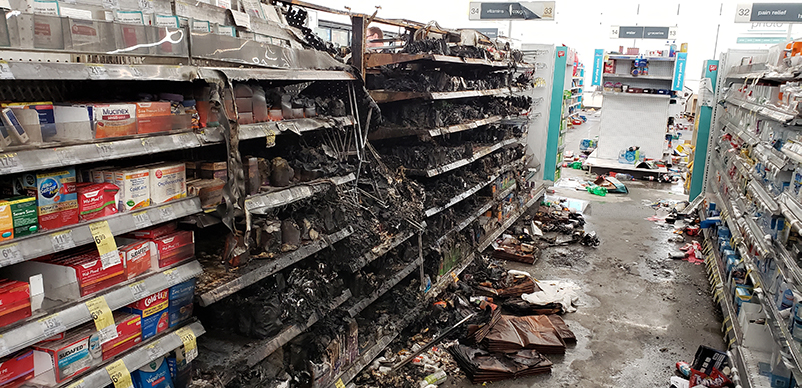
Examples of the damage at the Hennepin Avenue store, as seen in an over-the-counter aisle (above) and the pharmacy.
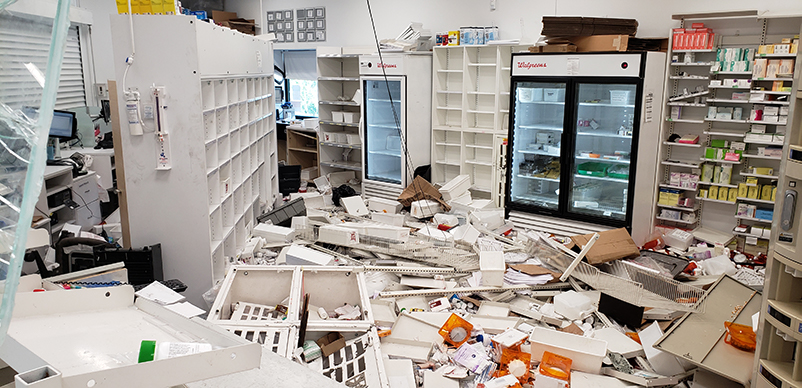
Community turns concern into cleanup
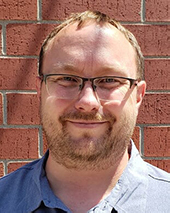
Heading in with his wife and 13-year-old son the morning of May 30, store manager Jason Niemann was doing a lot of wondering himself. Looting of the store had started Wednesday night, after he’d locked up and sent his team home for their safety. It continued intermittently through Friday night – including a fire set inside on Thursday night. Although the store sits a few blocks north of where most of the neighborhood damage occurred, its floor-to-ceiling windows along the sidewalk had made it a target. Now it was Saturday, and Niemann was about to get his first real look inside.
Only something else caught his eye first.
“The whole city was inundated that morning with people cleaning up,” he says. “As we drove in, we could see people parking blocks away and walking down the streets with gloves and shovels and brooms to help wherever they could.”
Roles had reversed. Walgreens had long been there for the community; now the community was there for Walgreens – men and women, a mix of ages and colors, many from the local neighborhood association, which had met earlier that morning, unbeknownst to Niemann.
“When we got to the store, volunteers were already cleaning up outside,” he says. “They had made their way through the entryway and were sweeping and cleaning our vestibule, throwing glass and debris into garbage bags. We were at a loss for words. It was very humbling to see the community cared as much as we did about the store.”
When it became clear that the scheduled contractors wouldn't be able to make it to the site that afternoon to board up the windows, securing the building for the night became the top priority.
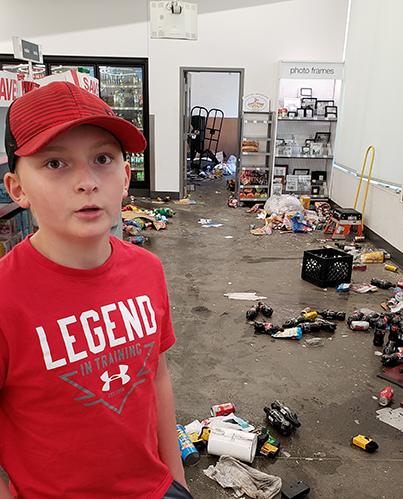
“I had a couple conversations with my district manager, and he said to go ahead and let the neighbors do what they wanted to do, and whatever I could help with, do it,” says Niemann. “So we just started doing it however we could. We finally got some boards here, and a couple of the neighbors came with screw guns and ladders, so we also got out the store ladders and started throwing boards up as quickly as we could.”
By 6:30 that night – in time to get home before a citywide curfew – they had done it. What was expected to only be a brief inspection had become a day of good, old-fashioned sweeping and sweating alongside neighbors. It was eye-opening for Niemann, but also for his son.
“We told Ethan when we left that morning that it would be a half-hour,” Niemann says. “And 8½ hours later, we got home. But it was important. In Minnesota, and nationwide, this is the start of cultural change. In my lifetime, I’ve never experienced anything like it. He didn’t have a lot of questions at first – more a quiet response. He wanted to help. He was holding boards up against the windows as the neighbors and I screwed them in. He ran to the lumber store with his mom to get more lumber when it was time.”
The experience has stuck with him.
“Last week,” says Niemann, “he was asking, ‘Dad, when are they going to have your store open again?’”
First things first: People
The answer to Ethan’s question seems to be this fall, given the time it will take for repairs. But as May turned to June, his dad’s focus was strictly on the short-term – namely, taking care of his displaced team in a wounded city still gripped by the coronavirus pandemic. Anyone comfortable with returning to work in the days after the looting was directed to a temporary new home. Niemann then tried to get his entire staff of 45 reassigned to a single store, to keep them together, but logistically it was just too many people, so they had to split up. Many employees who normally walked to work instead joined carpools.
Pharmacy manager Emily Rmaiti – working out of three different locations in the suburbs – couldn’t stop thinking about how her store’s closure was affecting another group: her regular patients back on Hennepin. No Walgreens stores within walking distance? Big problem.
“I personally felt a lot of anxiety because this is a big walking neighborhood,” Rmaiti says. “There are people here who don’t own cars. So with public transportation being shut down because of the violence and the pandemic, I think most stores in this vicinity here were in a similar situation. There just weren’t any options nearby for the patients. I worried how they would get their medications.”
The life preserver for many of them, in those uncertain first few days, was a combination of the phone and FedEx. Minneapolis was one of five U.S. cities where Walgreens store closures were significant enough to require an emergency call program, which started June 5. Pharmacists worked through lists of patients who were due for refills but whose neighborhood Walgreens was now shuttered, offering free FedEx prescription delivery or a transfer of the prescription to a different Walgreens. Rmaiti’s pharmacy team, regardless of where they were now working, could chip away at the lists. They made more than 200 calls a day.
That same week, the mobile pharmacy arrived. For the Hennepin pharmacy staff, it was another sort of call – a call home.
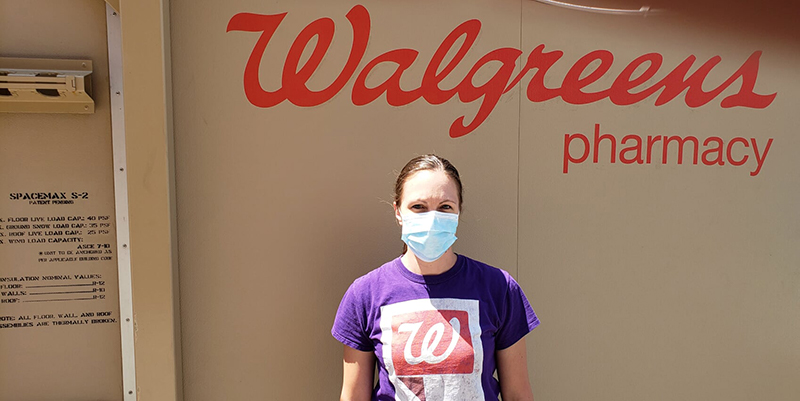
So good to be back
“I’m with my regular crew at my store again,” Gonzalez says from under the tent, her voice steady again. “And I’m feeling a lot better about that.”
Mobile pharmacies seem to have that effect on people – employees and patients alike. The structures themselves aren’t new to the Walgreens playbook, only this particular use for them. Since late 2017, after the triple whammy of hurricanes Harvey, Irma and Maria, they’ve been on standby for disaster relief, rolled in whenever a major storm sweeps through and shuts down Walgreens stores.
It took four days to get this one built and ready – the first of four in Minneapolis, shipped in on a flatbed truck. Although it looks unspectacular from the outside, it’s hardly just a pill box. You need electricity and computer connections in there. Security. Refrigeration. Most of the medications you’d find inside a regular Walgreens pharmacy are inside this one, in smaller quantities, carefully stocked to maximize space. Uncommon drugs might need to be special-ordered, Gonzalez says, but this usually only takes a day, and the team handles free FedEx packaging onsite.
The Hennepin store is a certified fertility specialty pharmacy, and until it fully reopens, fertility patients are instead being helped at a store in Edina, 15 minutes away. But even without those patients and drive-up service, the team is still filling more than three-quarters the number of prescriptions as it did before. Banners outside the store shout to customers that their pharmacy is back, even if it doesn’t first appear that way.
“It was pretty quiet the first few days that we opened,” says Rmaiti. “But we’ve been communicating how to come up to the parking lot, how to walk up to our tent, and people are catching on. We’re seeing a steady pace. And people have been more patient and friendly, given the circumstances. Obviously we’re now outside, in July, and even though we have tents, it’s hot out.”
The gratitude, however, is stronger than the heat.
“When we first opened,” Rmaiti says, “I had patients telling me they had been cutting medication in half because they weren’t sure when they’d be able to get to a pharmacy again. Everyone has been thankful.”
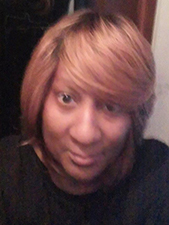
Like Gonzalez, fellow pharmacy technician Kendra Crayton is also back after a brief stint in St. Louis Park. A mother of five, she, too, has carried the stress of the tension and violence in the city. But overall, she says, things feel calmer now – COVID masks and all.
“The only worry the customers have is when they can get back in the store,” she says.
She gives the answer all the staff are giving: October. Probably.
In the meantime, Niemann – still largely onsite at Hennepin but expecting to soon be helping other recovering Walgreens stores in the area – knows his day-to-day operations are in good hands. On top of the usual responsibilities in their new mobile digs, pharmacy staffers have now been trained to open and close the “store,” such as it is. They handle cash reports, process all incoming deliveries and even let contractors and construction workers into the building.
“It’s amazing,” Niemann says. “Not that I didn’t think they were good before, but now I really see how extraordinary my pharmacy team is and how hard they work every day to do what they do for our customers.”
A little different than it was before, sure. But maybe not so different, either.
Care and inspiration, all in one place.
“Within 10 days of all the chaos that happened, we had a mobile pharmacy operating in the town that we’re here to care for,” Niemann marvels. “To see how quickly things have evolved from where we started, it’s humbling.”
